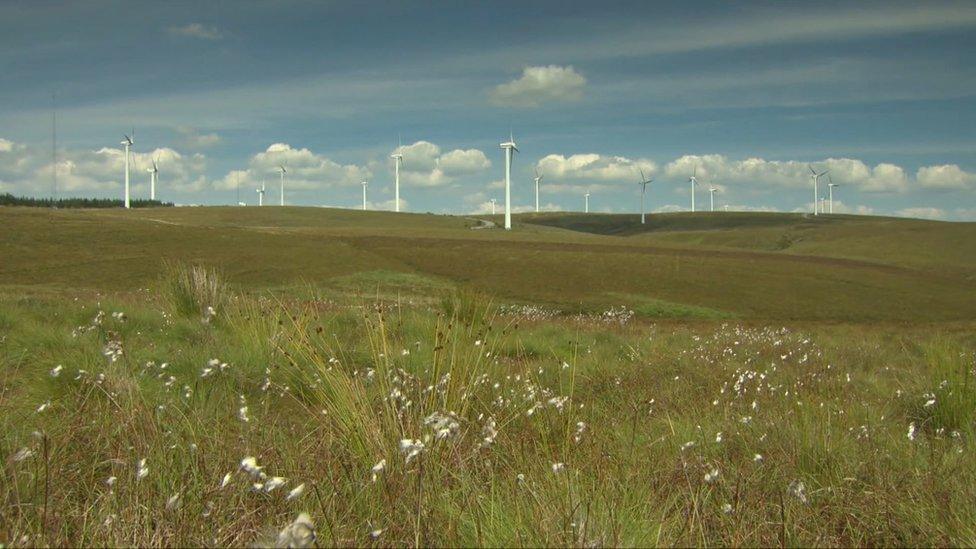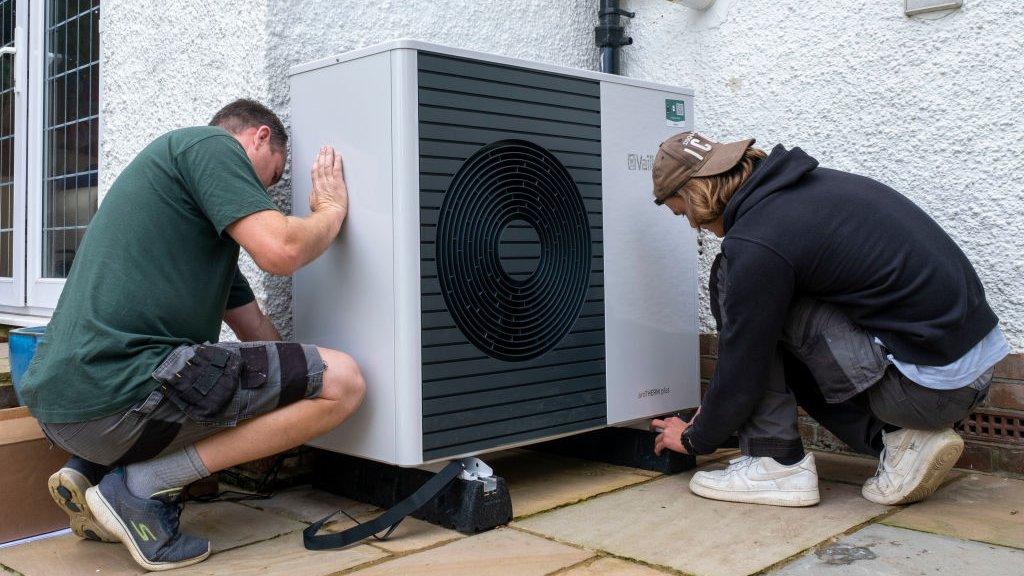Renewable energy: Frustration over cost of trying to go green
- Published
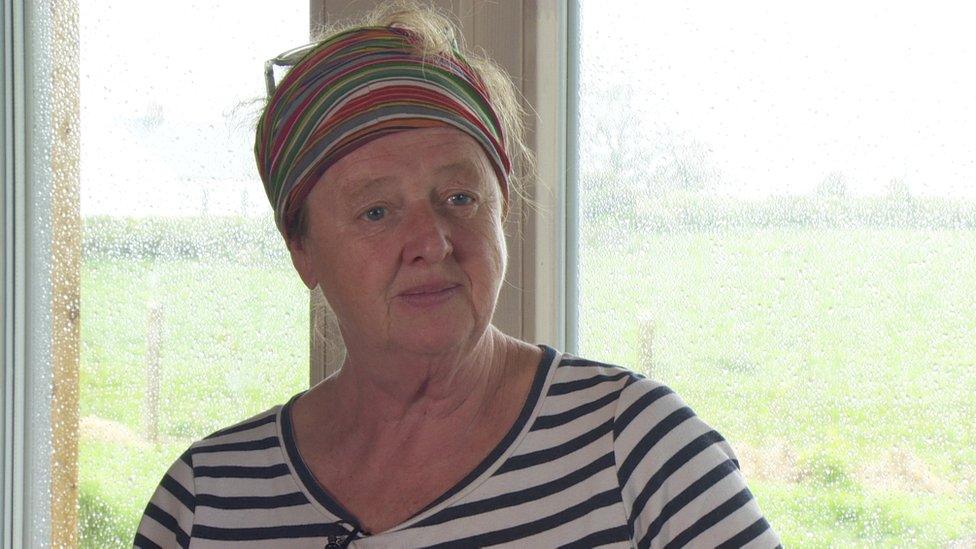
Celia Spouncer wanted to build a home that was as efficient as possible
A County Down woman has said she is "overwhelmingly disappointed" that a connection charge of thousands of pounds has dashed her hopes of installing an environmentally-friendly air source heat pump at her new-build house.
After a lifetime working in the environment sector, Celia Spouncer and her partner, David Thompson, wanted to build a home that was as efficient as possible and would allow them to be part of what Celia thought of as the green revolution.
"It's driven into you, it's all about air tightness in the build," she said.
"We have really thick insulation and we got the thicker cavity wall and now we're feeling the benefit of that.
"We have a wood stove and we're putting in a mechanical heat recovery system so that means the heat is redistributed evenly through the building, and that just left what choice we had with regard to our heating source."
But the dream ended when Celia contacted NIE to arrange connection for the air source heat pump they had chosen.
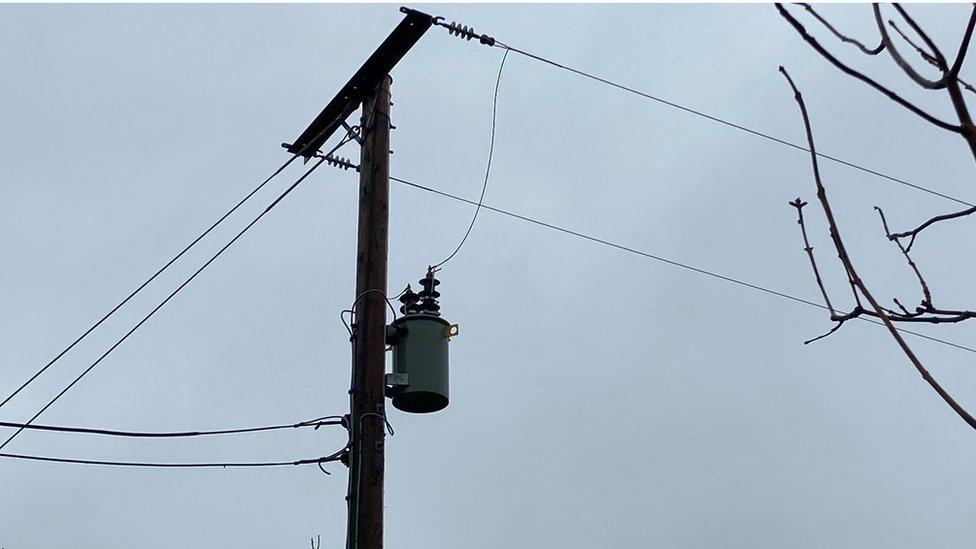
Celia says NIE told her the transformer did not have enough capacity to support an air source heat pump
"We were told that, where we are, that we would need to spend a lot of money on increasing the capacity of the transformer and putting in extra wiring, and it was going to come in at something like £16,000 to put in that additional improvement to the network so that we could put a low carbon energy source in."
'Big green tank'
The transformer, a grey box on a nearby pole, distributes power to the houses connected to it.
Celia says NIE told her the box did not have the capacity to support an air source heat pump, while maintaining supply to the other connected properties.
"I'm just kind of overwhelmingly disappointed that's where we're at.
"So we've reverted to an oil boiler and the heart sinks really to see that big green tank outside and particularly the current situation with the energy crisis and everything.
"We have put wiring in to retrofit if that might come available, or there might be a review, or perhaps the demand from the air source heat pump on the energy system, there might be a different model that would reduce that.
"But I think we'll invest in PV (photovoltaic) and solar - I mean that has to be, for us the obvious thing, to invest in our own energy generation rather than pay into wiring for a bigger network."
An NIE spokesperson said: "The journey to net zero is an evolution and the uptake of low-carbon technologies will place significant pressure on an electricity network infrastructure originally designed to manage a different level and type of demand.
"And new connections to the grid are reviewed for the impact that will have in any particular location."
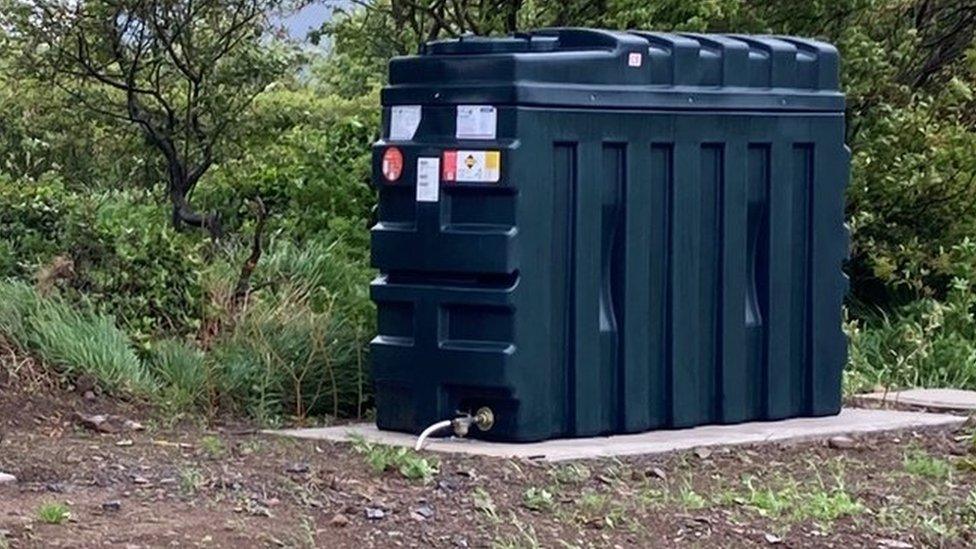
Celia says the sight of the oil tank makes her heart sink
The company operates the distribution system, which supplies power to people's homes.
The transmission grid, which brings energy from where it is generated to where it is needed, and powers NIE's distribution system, is run by SONI.
It recently announced that capacity on the grid for renewables from large-scale wind and solar farms is now at 75%, making Northern Ireland a world leader in its ability to provide power from renewable sources.
"We've come from a power grid that traditionally had three or four fossil fuel power stations to one now that has a large number of wind turbines and solar farms connected to the grid," said Alan Campbell, chief executive of SONI.
"Which is challenging to manage but something we're really proud of."
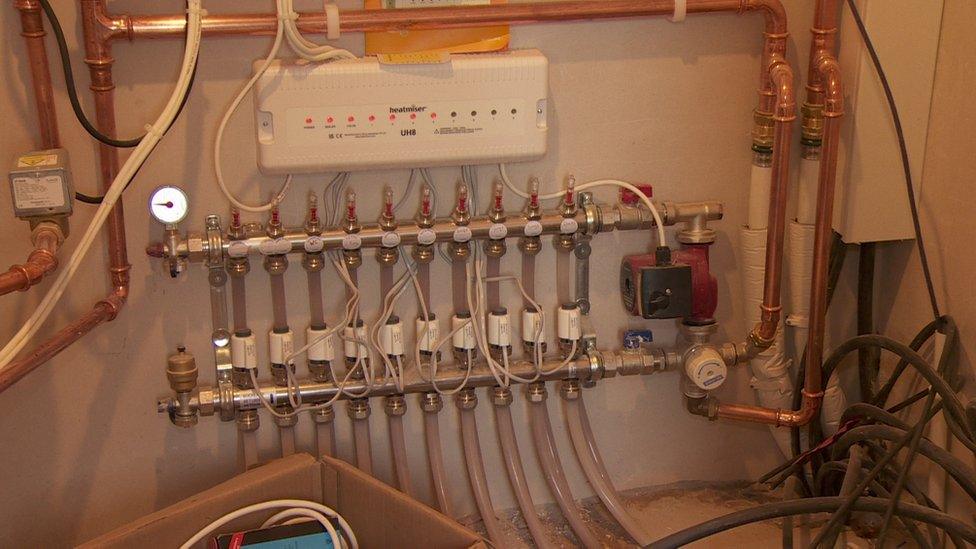
Plumbing for the air source heat pump has been adapted for the oil boiler the couple have had to install
Back in Portaferry, Celia is hoping the wiring that's now in the house for an air pump might still get used in the future.
"It's plumbed now but we have paid more money to plumb so that we can try to continue with our vision of low-carbon energy and be part of a solution for low carbon net zero.
"Perhaps with the current energy policy there could be a review in Northern Ireland, otherwise I just can't see this happening.
"I don't want other people to go down the same frustrating route we've been down."
- Published12 November 2021
